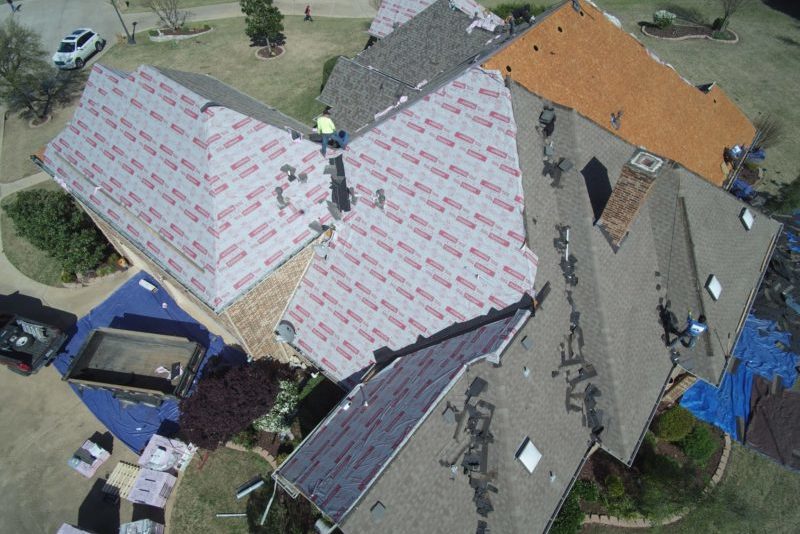
Roof boots, often overlooked but critically important, serve as the unsung heroes of a well-constructed roofing system. These specialized components are designed to seal off vulnerable roof penetrations, such as those made by pipes, vents, or other protrusions. In doing so, they play a vital role in preventing water leaks and subsequent damage to the building’s structure.
The Importance of Roof Boots
The primary function of a roof boot is to create a watertight seal around roof penetrations, which are common points of vulnerability for water ingress. Without proper sealing, these penetrations can become the source of leaks that not only damage the roof but also compromise the integrity of the entire building. Water leaks can lead to a host of problems, including mold growth, structural decay, and even electrical issues. Roof boots act as a barrier against these potential issues, ensuring that water is channeled away from sensitive areas, thereby prolonging the lifespan of your roofing system.
The Anatomy of a Roof Boot
A roof boot is more than just a simple cover; it’s a carefully designed component consisting of several parts that work in harmony to provide a robust seal. The basic anatomy of a roof boot includes:
- Flange: This is the flat part that lies flush against the roof surface, usually fastened with nails or screws.
- Collar: This is the raised section that fits around the penetrating object, such as a pipe or vent. It’s often made of flexible material to create a snug fit.
- Sleeve: Some roof boots come with an extended sleeve that slides over the penetrating object for added protection against water ingress.
Understanding these components is crucial for both proper installation and maintenance, as each part plays a specific role in ensuring the roof boot functions effectively.
Types of Roof Boots
Roof boots come in various types, each designed to cater to specific kinds of roof penetrations. Understanding these types will help you choose the right boot for your roofing needs:
- Pipe Boots: These are designed to fit around plumbing vents, flues, and other types of pipes that penetrate the roof. They are often adjustable to fit different pipe diameters.
- Vent Boots: These are used for HVAC systems, exhaust fans, and other ventilation systems. They are usually more robust to handle the higher airflow rates.
- Specialized Boots: These are custom-designed for unique applications like chimneys, skylights, or solar panel mounts. They often require specialized installation techniques.
Material Choices
When it comes to the material composition of roof boots, there are several options, each with its own set of advantages and disadvantages. Rubber is a popular choice, especially for the collar section of the boot, due to its flexibility and ability to create a snug fit around the penetrating object. However, one downside to rubber is its susceptibility to degradation under prolonged exposure to UV rays.
Metal options like aluminum or galvanized steel are often used for the more rigid parts of the roof boot, such as the flange and sleeve. These metals offer the benefits of durability and resistance to corrosion, making them a long-lasting choice.
Plastic or PVC is another material option, generally considered less durable than metal but also less expensive. These are often used in environments where metal might corrode or in less critical applications where extreme durability is not a concern.
The choice of material can be influenced by a variety of factors, including the local climate, the type of roof you have, and your budget constraints.
Roof Boot Variations for Metal Roofs
Metal roofs have gained popularity for their durability and aesthetic appeal, but they also have unique requirements when it comes to roof boots. Specialized metal roof boots are designed to accommodate the thermal expansion and contraction that metal roofs experience. They often come with features like double-sealing collars or high-temperature resistance to cope with the specific challenges posed by metal roofing systems.
Installation Best Practices
Installing a roof boot correctly is just as important as choosing the right type and material. The installation process usually involves cutting a hole in the roofing material to fit the boot, securing the flange with fasteners, and ensuring the collar fits snugly around the penetrating object. It’s crucial to follow the manufacturer’s guidelines and, when in doubt, consult a roofing professional. Proper sealing with appropriate caulking or sealants is also essential to prevent any water ingress.
Common Issues and How to Address Them
Even the best roof boots can encounter issues over time. Common problems include material degradation due to UV exposure, cracking due to temperature fluctuations, and loosening of fasteners. Regular inspections are key to early detection of these issues. Replacing worn-out parts, resealing joints, and tightening loose fasteners are some of the ways to address these problems and prolong the lifespan of your roof boot.
Frequently Asked Questions
- How long do roof boots last?
- The lifespan of a roof boot depends on the material and environmental conditions but generally ranges from 10 to 20 years.
- Can I install a roof boot myself?
- While it’s possible to install a roof boot yourself, it’s advisable to consult or hire a roofing professional to ensure proper installation and compliance with building codes.
- Are roof boots compatible with all roofing materials?
- Most roof boots are versatile and can be used with a variety of roofing materials, but it’s essential to check compatibility, especially for specialized roofing systems like metal roofs.
Conclusion
Roof boots serve as a critical component in any roofing system, providing the much-needed seal around vulnerable roof penetrations. Understanding the different types, materials, and installation practices can go a long way in ensuring that you choose the right roof boot for your specific needs. Whether you’re a homeowner, a DIY enthusiast, or a roofing professional, this guide aims to provide you with the comprehensive knowledge needed to make an informed decision.





